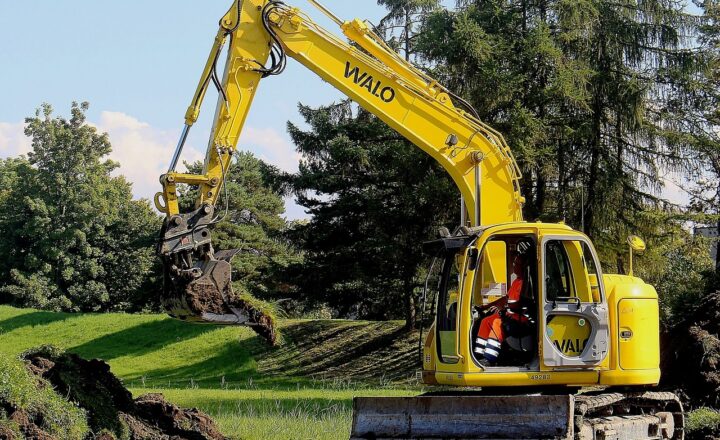The Ancient Walls That Seem to Have No Purpose – And Why They Baffle Experts
November 15, 2024

Ancient civilizations have left behind grand structures that capture the imagination of historians and archaeologists alike. One such enigmatic creation is a series of ancient walls, scattered across various regions of the world, which appear to serve no discernible purpose.
**Introductory Overview**
These walls, often built with immense effort and resources, challenge our understanding of historical infrastructure. Why were they constructed? What did the builders intend for them? This article will explore the various theories surrounding these mysterious monuments, their historical contexts, and the intriguing questions they raise.
—
### 1. **The Mysterious Structures**
The first sighting of these puzzling walls often occurs in remote locations, far from modern civilization’s hustle. They can be found in deserts, forests, and even mountainous terrains. Characteristically, these walls may vary in height and materials, ranging from massive stone blocks to crumbling mud and clay.
Some notable examples include:
– **The Great Wall of China:** While its main purpose is well-known, sections of it leave historians baffled about their significance in specific regions.
– **The Nazca Lines of Peru:** Though more commonly recognized as geoglyphs, many walls in this area serve a mysterious purpose, puzzling researchers.
– **The Walls of the Bactrian Treasure:** In Afghanistan, these walls hint at a sophisticated culture yet to be fully understood.
These structures hint at a time when ancient peoples had ambitions that might’ve extended beyond contemporary comprehension.
—
### 2. **Theories and Hypotheses**
Several hypotheses have been put forth by experts attempting to decipher the motivations behind these walls. Each theory presents an opportunity to look into the mindsets and behaviors of ancient civilizations.
**2.1. Defensive Purposes**
One of the most prevalent theories posits that these walls were built primarily for defensive purposes. Some communities may have deemed it necessary to construct walls for protection against territorial invasions or wild animals. Evidence from archeological sites — in terms of arrowheads or remnants of weaponry — supports this theory.
**2.2. Community Boundaries**
Another theory suggests that these walls served as community boundaries or markers, delineating significant cultural, spiritual, or political territories. In essence, they acted as symbols of social organization and identity.
**2.3. Astronomical Alignments**
Some researchers suggest that these structures were built as part of astronomical or ritual sites, using them as markers to track solstices or equinoxes. For instance, the alignment of some of these walls may correspond to specific celestial events, indicating a sophisticated understanding of astronomy by their builders.
**2.4. Ritualistic Function**
Moreover, there’s a school of thought which speculates that these walls had purely ceremonial functions, serving as locations for rituals or as motifs of power and reverence. This conjecture stems from findings of artifacts near the walls that suggest their use in cultural practices.
—
### 3. **The Role of Archaeology**
Archaeology plays a pivotal role in attempting to unlock the secrets of these walls. Ongoing excavations and research projects have focused on these ancient structures, revealing more about their construction methods, materials used, and the cultures responsible for them.
**3.1. Technology and Techniques**
Modern technology, such as ground-penetrating radar and 3D mapping, has revolutionized the field. These tools allow archaeologists to visualize structures hidden beneath the ground, leading to new discoveries that could provide more context on the purpose of these walls.
**3.2. Cultural Exchange**
Understanding these walls may also offer insights into ancient commerce and trade routes. Some walls serve as markers for past trade paths, hinting at interaction between different cultures. The walls can thus become essential clues in uncovering the larger narratives of human history.
—
### 4. **Modern Implications**
The walls that seem to have no apparent purpose remain a source of fascination not only historically but also in terms of contemporary relevance. They challenge current perspectives on architecture, community, and culture.
**4.1. Lessons in Preservation**
As we consider the significance of these ancient structures, there is an important conversation about preservation strategies. What lessons can we learn from the construction and maintenance of these walls? As modern civilization faces the challenges of sustainability, these ancient sites remind us of our need to protect cultural heritage.
**4.2. Inspiration for Future Generations**
Moreover, these walls inspire new generations of archaeologists, architects, and historians to think critically about the past and its relevance to modern society. How can we incorporate insights from ancient infrastructure into our planning and construction processes today?
—
### 5. **Conclusion: Embracing the Unknown**
The ancient walls that baffle experts are more than mere stone and mud; they are symbols of the complexity and depth of human ambition across cultures and timelines. Their construction speaks volumes about the social and political contexts of the periods in which they were built, while the unanswered questions they pose challenge our understanding of history.
As we continue to explore these remnants of our past, they remind us that history is layered, with each discovery prompting more questions than answers. The quest to understand them is as crucial as the walls themselves, revealing our insatiable curiosity about the world and the people who came before us.
Through their mysteries, ancient walls lead us to consider profound questions about purpose, identity, community, and the legacy we leave behind in the sands of time.







